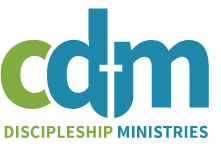Recently, I was asked to serve on a committee for my presbytery dealing with the role of deacon and to explain the Book of Church Order’s position on the topic. Since I helped to write the Book of Church Order, I was a good source to explain our original intent. On making the presentation to the presbytery, I realized that some of my brothers present were not even born at the time the book was written. In our officer training at CEP, we are often asked this same kind of question. Here is a very brief summary of what I said.
What does the BCO say on the topic?
In order to understand what the present BCO says, it has to be understood historically and in keeping with our identity as “the Continuing Church.” The PCA polity agreed with historical Calvinism, the Scottish Presbyterian Church, historic American Presbyterianism, and the Presbyterian Church in the united states. From that perspective there are three offices in the church: teaching elder, ruling elder, and deacon. Though often debated in the 1800’s, such was the southern Presbyterian Church’s position reflected in the 1933 BCO and adopted in the PCA BCO. There was also the inclusion of the involvement of others working with the officers in the areas of diaconal ministries without ordination.
Keeping the deacon as one of the three official offices in the PCA requiring ordination, we included a statement in 9-2 of the BCO that makes the BCO appear to contradict itself and has caused confusion today. The issue revolves around the question of the authority of the offices. In 9-2 and the entire book, including the ordination questions, we were attempting to distinguish between the ruling authority of the church session and that of the deacon based on the premise that as an ordained office, there was some authority, though not ruling authority, posited in the office of deacon. According to the BCO, while the office of deacon obviously carries some level of ordained authority, in this case ministerial (of service) and not ruling authority, it was viewed as a key office in the church that enabled the church to carry out various ministries under their leadership and with the session’s final authority.
Because the PCA claimed to be a grassroots movement within the framework of Presbyterian polity, the Book of Church Order committee’s approach was to leave as many details as possible to the local churches to develop. Many details, especially implementation, were left to local churches and presbyteries, including the role of women and other unordained persons, though the details and implementation would have to agree with the general principles spelled out in the BCO.

 There are certain lessons I have learned over the last decade and a half in youth ministry. I learned early on that taking students to play paintball really means open season on the youth pastor, and I learned that something always gets broken during a lock-in. I figured out that playing dodge ball allows me the opportunity to get back at “that” student, and I realized that the back seat of the church van provides students with way too much privacy. I have observed that youth group couples rarely last and that most parents judge a youth program by whether their child is having a good time at youth group. I found out that playing youth group games in the sanctuary never ends well and that students seldom bring Bibles to church. I also realized that the most effective way to help students connect the dots between faith and life is having a youth group that worships together, prays for each other, and participates in missions experiences.
There are certain lessons I have learned over the last decade and a half in youth ministry. I learned early on that taking students to play paintball really means open season on the youth pastor, and I learned that something always gets broken during a lock-in. I figured out that playing dodge ball allows me the opportunity to get back at “that” student, and I realized that the back seat of the church van provides students with way too much privacy. I have observed that youth group couples rarely last and that most parents judge a youth program by whether their child is having a good time at youth group. I found out that playing youth group games in the sanctuary never ends well and that students seldom bring Bibles to church. I also realized that the most effective way to help students connect the dots between faith and life is having a youth group that worships together, prays for each other, and participates in missions experiences.